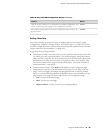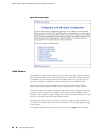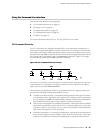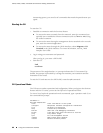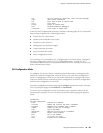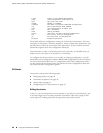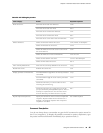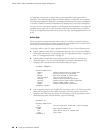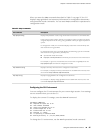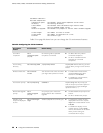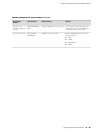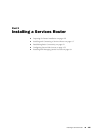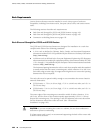
When you enter the help commands described in Table 51 on page 97, the CLI
displays usage guidelines and summary information for configuration statements
and operational mode commands. You can enter help commands in operational or
configuration mode.
Table 51: help Commands
DescriptionCLI Command
Displays help based on a text string contained in a statement or command name.
If the string contains spaces, enclose it in quotation marks. You also can specify
a regular expression for the string, using standard UNIX-style regular expression
syntax.
In configuration mode, this command displays statement names and help text
that match the string specified.
In operational mode, this command displays the following types of commands
that match the string specified, plus help text:
■
Operational mode commands
■
help topic and help reference commands you can enter for more information
For example, to get a list of statements that contain the string traps, enter the
help apropos traps command in configuration mode.
help apropos string
Displays summary information for configuration statements.
For example, to display summary information for the OSPF hello interval, enter
the command help reference ospf hello-interval.
help reference string
Displays usage guidelines for configuration statements.
For example, to display usage guidelines for the OSPF hello interval, enter the
command help topic ospf hello-interval.
help topic string
Configuring the CLI Environment
You can configure the CLI environment for your current login session. Your settings
are not retained when you exit the CLI.
To display the current CLI settings, enter the show cli command:
user@host> show cli
CLI complete-on-space set to on
CLI idle-timeout disabled
CLI restart-on-upgrade set to on
CLI screen-length set to 49
CLI screen-width set to 132
CLI terminal is 'vt100'
CLI is operating in enhanced mode
CLI working directory is '/cf/var/home/remote'
To change the CLI environment, use the set cli operational mode command:
Using the Command-Line Interface ■ 97
Chapter 4: Services Router User Interface Overview



